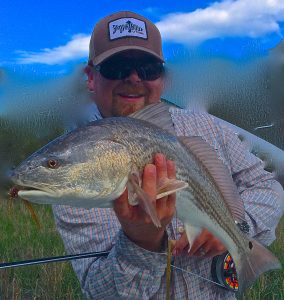
Been having some beautiful evenings for tailing reds in the marsh. There’s nothing better than chasing tail ! I’ve heard a few more reports of cobia being seen. Hopefully this Gale will sub side very soon and I can give them a peak.
Too many hooks into red drum, federal survey says
Bo Petersen
Bo Petersen Email Facebook @bopete
May 2 2016 5:08 pm May 2 5:47 pm
A red drum, also called redfish and spot-tail bass, can be identified by the distinctive spot. The drum is being overfished in the Southeast, according to federal stock managers. A red drum, also called redfish and spot-tail bass, can be identified by the distinctive spot. The drum is being overfished in the Southeast, according to federal stock managers. FILE/SCDNR
×
Red drum have been overfished in the Southeast since 2010, according to a new, more comprehensive federal stock assessment to be released this week. That’s a problem for the state’s wildlife managers and the Legislature.
It could mean tighter restrictions on catching one of the most sought-after game fish in the Lowcountry. In South Carolina alone, the red drum fishery has been estimated to be worth $600 million per year. The catch limits are a flashpoint of contention for inshore and offshore anglers.
What do you think?
Catch limits in the state were tightened in 2000 to bring back the declining species, then loosened in 2006 as it made a remarkable comeback. Angling groups had pushed legislators to do it, even though state net surveys showed the fish was in an apparent slump again and some researchers said it was too soon.
Now the Atlantic States Marine Fisheries Commission, the federal group in charge of the fishery, could force more restrictions.
“We may have to adjust our management limits more conservatively,” Mel Bell, S.C. Department of Natural Resources fisheries director, said before the meeting.
The commission is meeting this week in Alexandria, Va., where results of the still-draft assessment are being discussed and will be voted on. That group is in charge of the fishery and tells state managers what abundance of the stock to reach, but not how to achieve it. The fishery could be put off limits if the goals aren’t reached.
The red drum stock has increased since 2010, the assessment said, “however, overall removals and fishing mortality have also increased.” Fishing mortality refers to fish caught and released that do not survive. Millions of red drum have been stocked in South Carolina in ongoing programs.
DNR could take a number of actions to try to restore the fishery, but the recent history suggests that more catch restrictions would be needed to bring it back. In South Carolina, catch limits must be approved by the Legislature.
The anecdotal evidence has been that the red drum are declining again and now the science has supported it, said Rep. Stephen Goldfinch, Jr,. R-Murrells Inlet, who represents part of Charleston County. Goldfinch is a former commercial fisherman and a recreational fisherman who pushed for a small catch-and-release area to see if overfishing is the problem here before legislative action is decided.
A proposal earlier this year to do that raised a stink, he said, and was shelved to wait on the commission report.
“I think we need to do something, but I’m not going to do it without the public’s input. The easiest culprit to take out of the equation is the fisherman,” Goldfinch said. For him that’s a last resort.
Red drum spawning runs in cycles, so a few years of lower numbers isn’t out of the ordinary. But DNR drum managers had been expecting the recent decline to turn around and it didn’t happen. Bell, who is at the commission’s meeting, said Monday he was surprised at how low the numbers were for the entire region, which is South Carolina to northern Florida.
The drum, also called redfish and spot-tail bass, has been fished so relentlessly that as far back as 1981 S.C. Natural Resources began putting limits on the fish. In the 1990s, coastal population began to grow rapidly and technology advanced with it, bringing more and more sports boats. Nearly 500,000 people now hold saltwater recreational fishing licenses in the state.
By 2000, the survey numbers had fallen so alarmingly that the catch limit was dropped from five to two fish per trip and a “slot” of fish sizes that could be kept was established. Red drum populations rebounded, which led to recreational fishing groups pushing for the limit being loosened in 2006 to three fish per trip and the slot adjusted.
Anglers have disputed the survey counts that spurred restrictions as spotty and inaccurate. Regulators had conceded that the science was not as good as it could be. That led to a more exhaustive approach for the red drum assessment, that has been peer reviewed, or worked over for flaws by an independent team of experts.
“We have new models to better describe the population,” said Tina Berger, commission communications director.
Reach Bo Petersen at 843-937-5744, @bopete on twitter or Bo Petersen Reporting on Facebook.